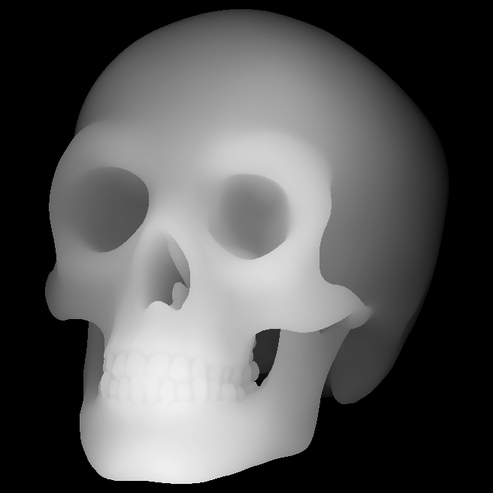Hi Joe,
PixelCNC automatically stretches the contrast of an image to range from absolute black to full white to ensure that the raster-layer's contents actually occupy the Z area from the bottom of the layer to the top of the layer, rather than just a section of that range.
After that the only things left to determine how deep cuts will go is the canvas Z size and the layer's Z origin and Z size too. There's also the issue of a cutter not being small enough to fit into narrow areas. So for instance if I load this image into PixelCNC:

Canvas is one inch thick and my layer is set to an origin of 0.25" and a thickness of 0.5" this is the result:

For just the area of the raster-layer itself (ignoring the outer blank canvas margin that I could've used a Z-fill on but wanted to make the image clearer) the shallowest cuts will be 0.25" below the top of the canvas and the deepest cuts will be 0.75" below the top of the canvas, particularly the area around the skull where the cutter will be at max depth.
The only thing that would otherwise prevent cuts from actually reaching down to the bottom of the raster-layer is if your deepest parts are narrower than the cutter can actually reach, something like this:

In this image most of the shape is too narrow to accommodate the 1/4" cutter, except for a few spots on the left, preventing it from actually cutting down to the bottom of the raster-layer, which in this example is the same thickness as the canvas (0.25") and has a layer Z origin of zero so that it's resting on the bottom of the canvas.
Also, if you're using a Leave Stock amount that's going to offset the carve in 3D, not just horizontally, so if you have a 0.05" leave stock on a 0.25" canvas the deepest that cuts will be able to go is 0.2" below the top of the canvas surface.
Hope this helps. Let me know if I'm missing something - and maybe share a screenshot too if this doesn't help you figure it out.
- Charlie

